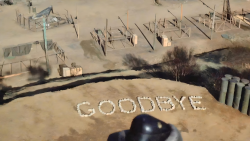Critique/analysis of John Donne's "The Good-Morrow".
Folder:
Critique/analysis ‘The good-morrow’ is a exemplary example of metaphysical conceit by John Donne, with the use of alliteration, allusion, amphiboly, assonance, enjambment, figurative language, hyperbole, imagery, metaphors, metonymy, onomatopoeia, paraphrasing, paradox, repetition, symbolism, syncope and use of tone quite prevalent within this tightly structured aubade. ‘The good-morrow’ with its ababccc rhyme scheme is written predominantly in iambic pentameter divided into three stanzas, each containing seven lines. Additionally each stanza is divided further into a quatrain and a triplet (rather than a couplet) finished in a masculine ending with an Alexandrine close. Whilst this aubade, at first glance appears to be a short, simple and direct poem with its colloquial and informal first stanza, it is in fact one of Donne’s finest love poems/songs (at least in my humble and unqualified opinion), with its dense and intricately laid structure of Platonic and religious ideas.
The speaker of the sonnet, (one imagines to be that of Donne himself to Anne More) is singing to his lover the morning after a night of passion. ‘The good-morrow’ is very much an anthology of their love where Donne discusses the past, present and the future within the first, second and final stanza respectively. He begins in the first quatrain with energetic language, announcing his utter amazement to the utter ignorance of their combined knowledge and experience in life and love, describing their behaviour as childish with the terms “wean’d”, “fuck’d”, “countrey pleafures” and “childifhly” and in a deep sleep with “fnorted” and “feaven fleepers”. The use of onomatopoeia in these three words further emphasise the importance of this idea of sleep and the alliteration of the ‘s’ sounds has a soothing appeal. He finishes the first stanza off with a triplet reflecting on the many women he had before this relationship, commenting that they were nothing compared to who he has now and therefore rejects them. The second stanza begins with the amphiboly of both their literal physical awakening in the morning as well as the allusion of their awakened souls to this new love “And now good morrow to our waking soules”. Donne continues, saying that everyone else (the lower echelon, unenlightened population) can go off to discover new worlds “Let fea-discoverers to new worlds have gone”, because he has found a one already, inside his bedroom and now his entire universe, in this new love “And makes one little roome, an every where”. He finishes the sonnet lying down, looking into the eyes of his lover “My face in thine eye, mine in thine appears”, convinced that they are now completely united as one “If our two loves be one”, and will stay that way eternally “Love fo alike, that none doe flacken, none can die”.
‘The good-morrow’ begins, quite startlingly with an oath “I wonder by my troth” and the quatrain continues with disjointed and exclamatory sentences that echo the rhythmic patterns of impassioned speech. This impassioned tone is further emphasised with the sexual imagery throughout, especially in lines 2-3 “wean’d” and “fuck’d” elicit the images of breasts and further more with the euphemism “countrey pleafures” as a metaphor for breasts. The use of this loaded term “countrey pleafures” also adds to the informal and somewhat vulgar nature of the quatrain. Line 4 also uses the rather vulgar term “fnorted” meaning to sleep heavily or to snore (from Middle English snorten, to snort, from fnorten, variant of fnoren). Donne takes this first stanza and using his own special treatment of poetical conventions as it flies in the face of the traditional and complementry opening of a love song with its realistic and colloquial language. Compare this with the .love song from Shakespeare’s Cymbeline (Act II Scene III Lines 22-30) (Shakespeare, 1995)
“HARK! hark! the lark at heaven's gate sings,
And Phoebus 'gins arise,
His steeds to water at those springs
On chaliced flowers that lies;
And winking Mary-buds begin
To ope their golden eyes:
With everything that pretty bin,
My lady sweet, arise:
Arise, arise!”
The paraphrased religious and pristine allusion “feaven fleepers den” is the Catholic/Islamic legend where seven youths of Ephesus are persecuted by the Roman Emperor Decius, for their Christian/Muslim faith in lieu of paganism. The youths after giving most of their money, bar a few coins to the poor, go to sleep in a cave overnight. Decius hears of this and orders for the cave to be sealed, centuries pass with the seven still trapped inside. Approximately 187 years pass and a farmer opens the cave to use it as a cattle pen, awakening the seven sleepers. One the seven walks down to the town in order to buy bread before handing themselves over to the authorities, thinking that they have only been asleep for one night. He is surprised to find that the temples all have crucifixes attached and the merchants are surprised to receive Decius stamped coinage. The bishop is alerted and he meets with the seven and interviews them. They all die praising God and the Bishop announces this as a miracle, being the second resurrection. This story was particularly apt for Donne as he came from a Roman Catholic family, and so he experienced persecution until his conversion to the Anglican Church. However this term, in particular the word “den” also relates to Plato’s ‘Cave Allegory’ from Book VII of the Republic. In it Plato describes to Glaucon, humans being born and living, chained, in an underground den in which everything they see are merely shadows reflected from a fire burning behind them inside the cave and are therefore illusions. However as they were born there they believe what they are seeing is the truth. Not until they are able to exit the cave and see the light of the sun (God) are they able to be enlightened to the real state of affairs. Clearly both of these allusions are symptomatic of Donne’s journey in the exploration of his life and love.
